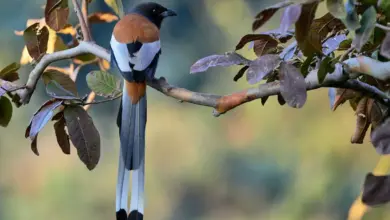American Black Swift or Black Swift
The American Black Swifts — commonly referred to as “Black Swift” (Cypseloides niger) – is North America’s largest swift that is mostly found in mountainous regions of the western United States and Canada.
Distribution / Range
The Black Swifts occurs naturally from northern British Columbia in Canada through the United States and Mexico to Costa Rica; as well as on islands in the West Indies.
After the breeding season, the American Black Swifts migrate out of North America. It is believed that some of them winter in the West Indies, while some remain year-round residents. They typically migrate in large flocks.
Description
The American Swift averages 7 inches in length. During flights, the body of the Black Swift has the appearance of a flying cigar – due to its crescent-shaped wings.
The plumage is mostly dark grey; although there is a contrast between the upper and lower wings. The shoulders are much darker than the remaining portion of the wing. Their tails are short and slightly forked.
Males, females and juveniles are similar.
The American Black Swift is the largest swift in the USA.
Similar Species:
- The White-throated Swift can easily distinguished by its white throat and flank patches.
- The Chimney and Vaux’s Swift are paler about the throat and breast, and have very short, blunt tails.
Breeding / Nesting
They typically breed near water, most often on high cliff faces – either above the ocean surf or behind or next to waterfalls.
The nest is made of twigs, glued together with mud. The may use other material, such as ferns and seaweed, depending on what is available.
The average clutch consists of only 1 egg, sometimes 2. The incubation lasts for 23 to 27 days. The chicks are fed only once a day by both parents -usually at dusk.
Diet / Feeding
American Black Swifts mostly forage in flight, catching insects, such as flying ants and beetles. They are usually seen in feeding flocks, flying closely together.
Swift Information … Swift Species Index … Swift Species Photo Gallery
Beauty Of Birds strives to maintain accurate and up-to-date information; however, mistakes do happen. If you would like to correct or update any of the information, please contact us. THANK YOU!!!




